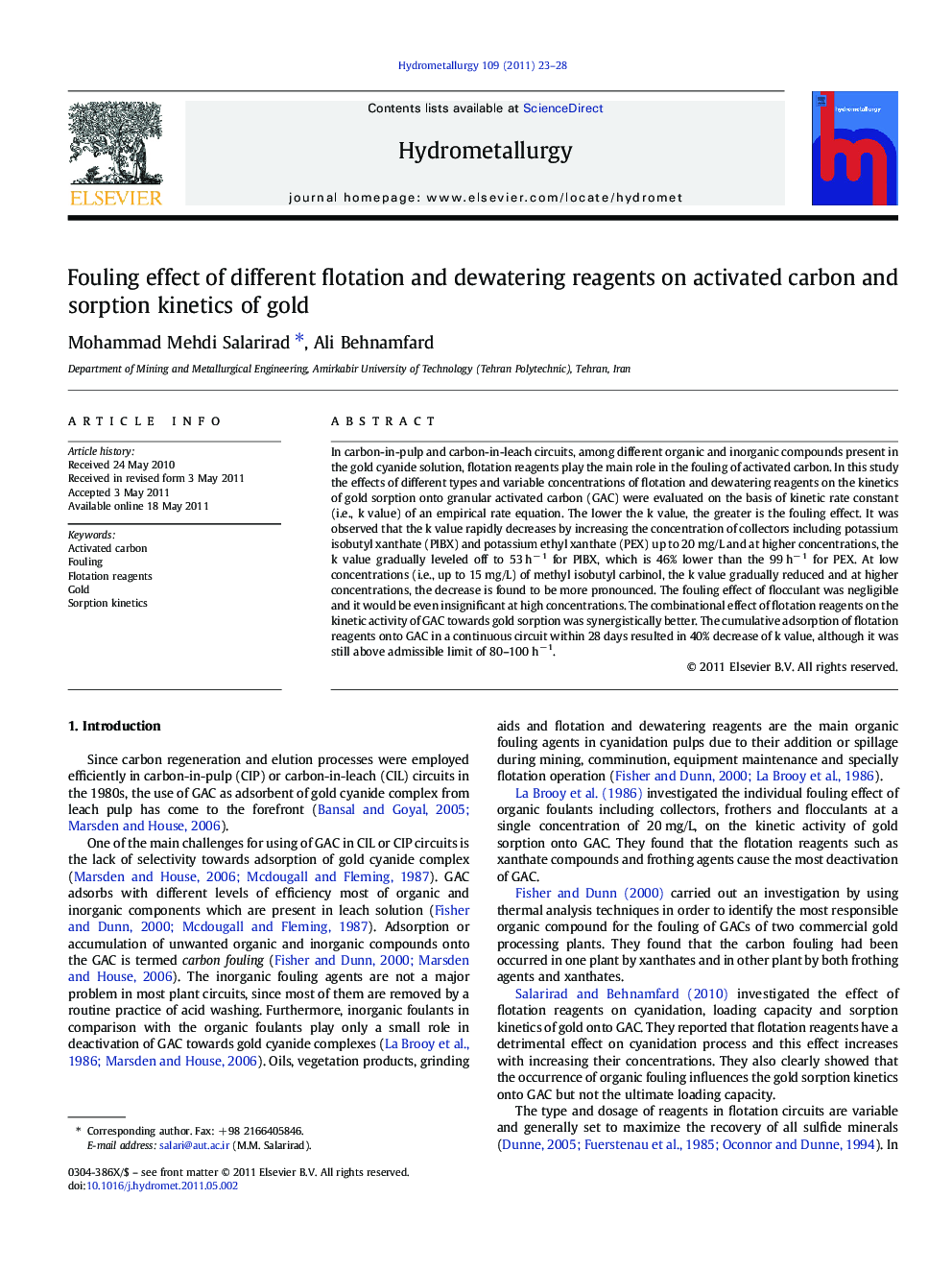| کد مقاله | کد نشریه | سال انتشار | مقاله انگلیسی | نسخه تمام متن |
|---|---|---|---|---|
| 212636 | 462059 | 2011 | 6 صفحه PDF | دانلود رایگان |

In carbon-in-pulp and carbon-in-leach circuits, among different organic and inorganic compounds present in the gold cyanide solution, flotation reagents play the main role in the fouling of activated carbon. In this study the effects of different types and variable concentrations of flotation and dewatering reagents on the kinetics of gold sorption onto granular activated carbon (GAC) were evaluated on the basis of kinetic rate constant (i.e., k value) of an empirical rate equation. The lower the k value, the greater is the fouling effect. It was observed that the k value rapidly decreases by increasing the concentration of collectors including potassium isobutyl xanthate (PIBX) and potassium ethyl xanthate (PEX) up to 20 mg/L and at higher concentrations, the k value gradually leveled off to 53 h− 1 for PIBX, which is 46% lower than the 99 h− 1 for PEX. At low concentrations (i.e., up to 15 mg/L) of methyl isobutyl carbinol, the k value gradually reduced and at higher concentrations, the decrease is found to be more pronounced. The fouling effect of flocculant was negligible and it would be even insignificant at high concentrations. The combinational effect of flotation reagents on the kinetic activity of GAC towards gold sorption was synergistically better. The cumulative adsorption of flotation reagents onto GAC in a continuous circuit within 28 days resulted in 40% decrease of k value, although it was still above admissible limit of 80–100 h− 1.
Research highlights
► We studied the fouling effect of flotation and dewatering reagents on activated carbon and sorption kinetics of gold.
► Batch fouling tests showed that the fouling of activated carbon significantly affected by the type and concentration of flotation and dewatering reagents.
► It was also shown that the fouling is not straightly additive and the simultaneous presence of several fouling agents is synergistically better.
► Continues circuit tests revealed that the presence of flotation reagents in CIL/CIP circuits not always lead to deleterious fouling effect.
► Co-adsorption of flotation reagents onto the activated carbons results in a three-stage trend of gold sorption.
Journal: Hydrometallurgy - Volume 109, Issues 1–2, September 2011, Pages 23–28